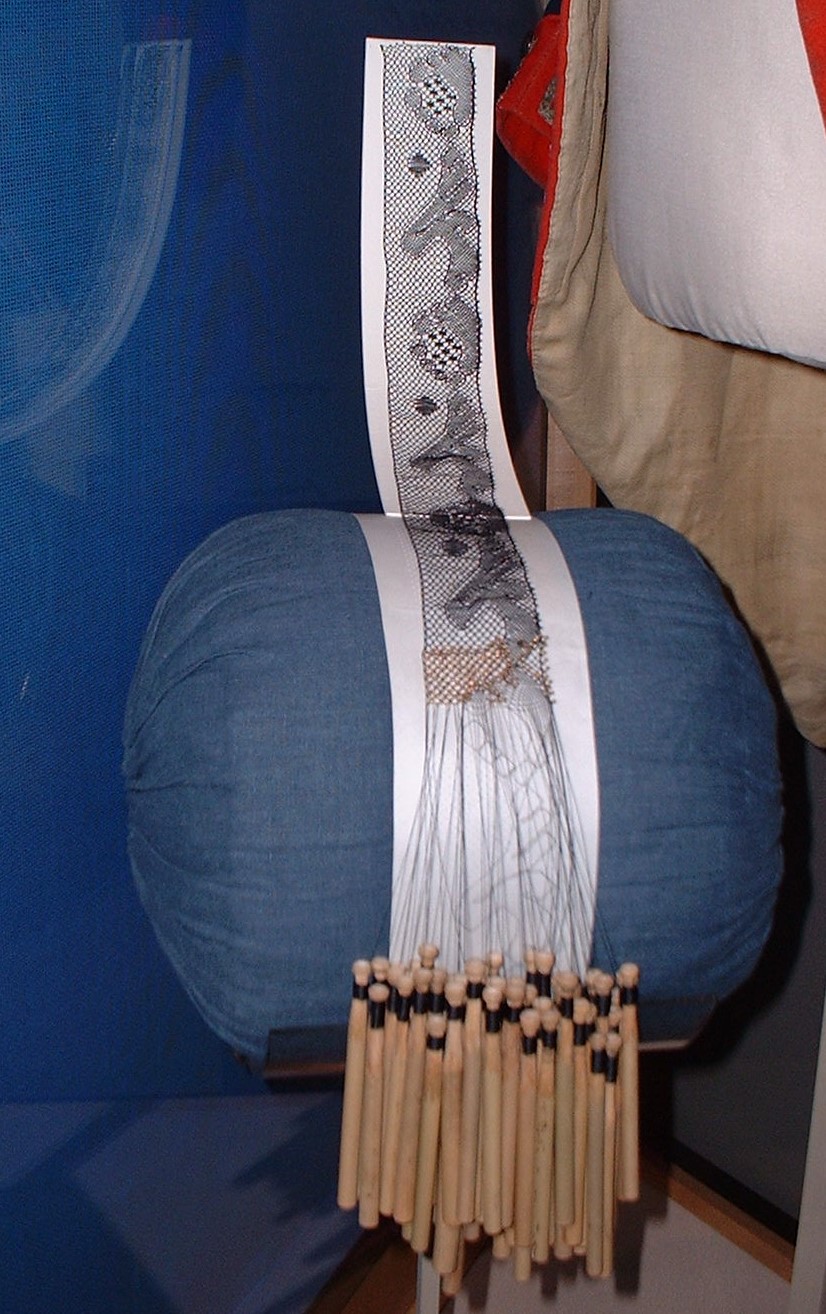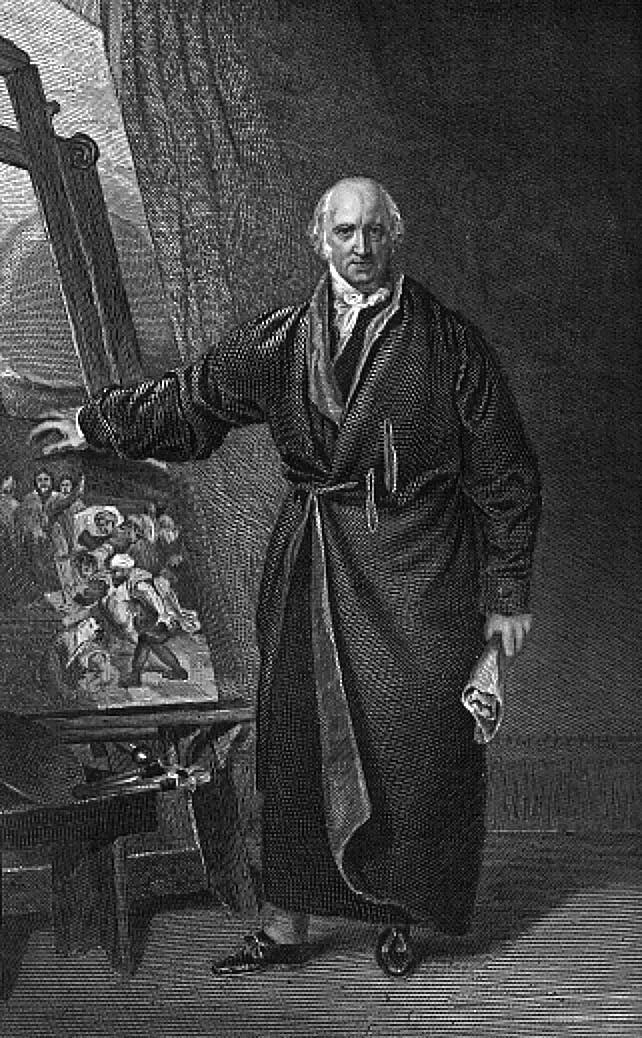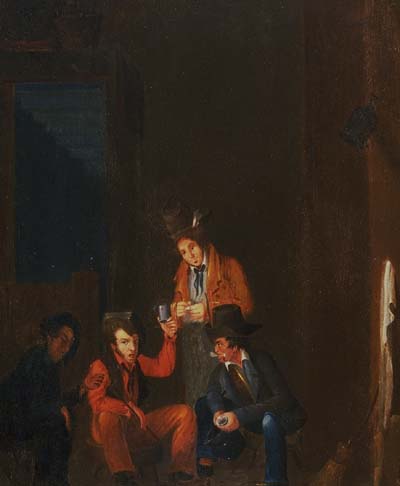|
Mary Way
Mary Way (1769November 1833) was an American painter, known for her portrait miniatures. She, along with her sister Elizabeth Way Champlain, was among the first women to work as a professional artist in the United States. Background Portrait miniatures were popular in the colonial period and early Republic for about a century, from 1750 to 1850. John Singleton Copley was one of the more prominent American painters to produce miniatures. The genre's historical roots extend back to medieval illuminated manuscripts, in which small-scale, detailed artistry was of paramount importance; and the portrait medal, popular in ancient times and the Renaissance, which Johnson describes as the "first small portable likeness[]". The medium in which Way primarily worked—Watercolor painting, watercolor on ivory—was first developed by Rosalba Carriera, a 17th-century Italian miniaturist. As might be expected, miniature painting in this technique was immensely difficult. The small size alon ... [...More Info...] [...Related Items...] OR: [Wikipedia] [Google] [Baidu] |
New London, Connecticut
New London is a seaport city and a port of entry on the northeast coast of the United States, located at the mouth of the Thames River in New London County, Connecticut. It was one of the world's three busiest whaling ports for several decades beginning in the early 19th century, along with Nantucket and New Bedford, Massachusetts. The wealth that whaling brought into the city furnished the capital to fund much of the city's present architecture. The city subsequently became home to other shipping and manufacturing industries, but it has gradually lost most of its industrial heart. New London is home to the United States Coast Guard Academy, Connecticut College, Mitchell College, and The Williams School. The Coast Guard Station New London and New London Harbor is home port to the Coast Guard Cutter ''Coho'' and the Coast Guard's tall ship ''Eagle''. The city had a population of 27,367 at the 2020 census. The Norwich–New London metropolitan area includes 21 towns and 274,055 ... [...More Info...] [...Related Items...] OR: [Wikipedia] [Google] [Baidu] |
Glaucoma
Glaucoma is a group of eye diseases that result in damage to the optic nerve (or retina) and cause vision loss. The most common type is open-angle (wide angle, chronic simple) glaucoma, in which the drainage angle for fluid within the eye remains open, with less common types including closed-angle (narrow angle, acute congestive) glaucoma and normal-tension glaucoma. Open-angle glaucoma develops slowly over time and there is no pain. Peripheral vision may begin to decrease, followed by central vision, resulting in blindness if not treated. Closed-angle glaucoma can present gradually or suddenly. The sudden presentation may involve severe eye pain, blurred vision, mid-dilated pupil, redness of the eye, and nausea. Vision loss from glaucoma, once it has occurred, is permanent. Eyes affected by glaucoma are referred to as being glaucomatous. Risk factors for glaucoma include increasing age, high pressure in the eye, a family history of glaucoma, and use of steroid medication. F ... [...More Info...] [...Related Items...] OR: [Wikipedia] [Google] [Baidu] |
Lyman Allyn Art Museum
The Lyman Allyn Art Museum is located in New London, Connecticut and was founded in 1926 by Lyman Allyn's daughter Harriet Upson Allyn."Our Mission" on the Lyman Allyn Art Museum website Its collection includes European and non-Western art as well as American fine and decorative art, 17th-century European works on paper, 19th-century American paintings, and contemporary art. The museum also conducts educational programs. The Deshon-Allyn House on the museum's campus is a Federal style house built in 1829 by Daniel Deshon, sold to Lyman Allyn, and occupied by various members of his family. It is listed on the |
Ipswich Lace
Ipswich lace is a historical fashion accessory, the only known American hand-made bobbin lace to be commercially produced. Centered in the coastal town of Ipswich, Massachusetts north of Boston, a community of lacemaking arose in the 18th century. Puritan settlers to the area likely made and wore lace as early as 1634, because Sumptuary laws from the early colonial records indicate this activity. Earliest known records of the commercial production indicate that lace produced by local women was used to barter for goods in the 1760s, as denoted by ledger account books belonging to local merchants. These laces were sold in the region from Boston to Maine. Although some references presume that Ipswich lace represents an offshoot of the styles of British laces such as that known today as Bucks point lace, and originated with English immigration, other evidence points to continental influence. Bucks point is theorized to have developed from Mechlin, Lille, and other lace styles brought t ... [...More Info...] [...Related Items...] OR: [Wikipedia] [Google] [Baidu] |
American Academy Of The Fine Arts
The American Academy of the Fine Arts was an art institution founded in 1802 in New York City, to encourage appreciation and teaching of the classical style. It exhibited copies of classical works and encouraged artists to emulate the classical in their work. The mayor of New York city at the time, Richard Varick, and Gulian Verplanck, a New York politician, were some of the Academy's original organizers. Younger artists grew increasingly restive under its constraint, and in 1825 left to found the National Academy of Design. History The Academy's original name was the New York Academy of the Fine Arts.Art Value Terms AskArt.com. Its founders included New York Mayor and |
Samuel Lovett Waldo
Samuel Lovett Waldo (April 6, 1783 – February 16, 1861) was an American portrait painter. Early life & studies Waldo was born on April 6, 1783, in Windham, Connecticut, the son of Esther () and Zacheus Waldo. At the age of sixteen, he moved to Hartford to begin his formal art training under the tutelage of Joseph Steward, a prominent local artist. Four years later, he set up shop as a portraitist in Hartford, later relocating to Litchfield, Connecticut. While in Hartford, he had made the acquaintance of congressman John Rutledge, Jr., who was impressed with his work and, in 1803, invited him to come to Charleston, South Carolina. From 1803 to 1805, Waldo earned a sizable income from his commissions and decided that he would use the money to study art in London. He studied under Benjamin West in London. He arrived in London in 1806 with letters of introduction to Benjamin West and John Singleton Copley. While studying with them, he also studied drawing at the Royal Academy and ... [...More Info...] [...Related Items...] OR: [Wikipedia] [Google] [Baidu] |
Anson Dickinson
Anson Dickinson (19 April 1779 – 9 March 1852) was an American painter of miniature portraits who achieved fame during his lifetime, producing a very large number of works, but who is now largely forgotten. Early years Anson Dickinson was born in Milton, a district of Litchfield, Connecticut, in 1779, son of Oliver Dickinson Junior (1757-1847) and Anna Landon Dickinson (1760-1849). He was the oldest of ten children. His father was a master carpenter. For a while Dickinson was apprenticed to Isaac Thompson, a silversmith in Litchfield. He did enamel work, made frames and painted signs before becoming a miniature painter. He probably met and learned from Elkanah Tisdale in these early years. On 27 April 1802 Dickinson published an advertisement for miniature portrait painting in the '' Connecticut Journal'', a New Haven newspaper. The first known painting signed by Dickinson is dated 1803. In July 1804, Dickinson made a trip to New York City, where Edward Greene Malbone painted ... [...More Info...] [...Related Items...] OR: [Wikipedia] [Google] [Baidu] |
John Wesley Jarvis
John Wesley Jarvis (1780 or 1781 – January 14, 1839) was an American painter. Biography John Wesley Jarvis (great, great nephew of Methodist leader John Wesley), was born at South Shields, England. His father was an English mariner, who moved his family to the United States in the mid-1780s. The Jarvis family settled in Philadelphia; there he spent his childhood and began his artistic training. He is known to have frequented the studio of the aging colonial-era portrait painter Matthew Pratt and he knew the Danish painter Christian Gullager. His formal instruction began around 1796, when he became apprenticed to Edward Savage. He also spent times with David Edwin, an English engraver also employed by Savage. Jarvis moved to New York in 1801 with Edward Savage. Within a year he was working on his own as an engraver. In 1803 he entered into a partnership with Joseph Wood. His partnership with Wood lasted seven years. Together they executed engravings, miniatures, and lar ... [...More Info...] [...Related Items...] OR: [Wikipedia] [Google] [Baidu] |
Theodosia Bartow Prevost
Theodosia Bartow Prevost (November 1746 – May 18, 1794), also known as Theodosia Bartow Burr, was an American Patriot. Raised by a widowed mother, she married British Army officer Jacques Marcus Prevost at age 17. After the American Revolution began, her own Patriot leanings led her to offer the use of her house, the Hermitage, as a meeting- and resting-place for revolutionaries, including Alexander Hamilton, Marquis de Lafayette, and Aaron Burr; it was briefly used as the headquarters of George Washington, who counted her amongst his friends. Burr's visit to the Hermitage began a secret romance that, following the death of Prevost's first husband, led to marriage. The couple moved to New York City due to Burr's legal practice, and she acted as a crucial ally and confidante as he began his political career. She was known for her wit, unusually deep education and intellectual acuity; her death in 1794 left Burr without "his best ally in the political wars to come". Early life ... [...More Info...] [...Related Items...] OR: [Wikipedia] [Google] [Baidu] |
Theodosia Burr Alston
Theodosia Burr Alston (June 21, 1783 – January 2 or 3, 1813) was an American socialite and the daughter of the third U.S. Vice President, Aaron Burr, and Theodosia Bartow Prevost. Her husband, Joseph Alston, was governor of South Carolina during the War of 1812. She was lost at sea at age 29. Early life Theodosia Burr Alston was born to Aaron Burr and Theodosia Bartow (Prevost) Burr in Albany, New York in 1783, a year after they married. Alston's mother was the widow of Jacques Marcus Prevost (1736-1781), a British Army officer who settled in New York City; she had five other children from that marriage and was nine years Burr's senior. Alston was raised mostly in New York City. Her education was closely supervised by her father, who stressed mental discipline. In addition to the more conventional subjects such as French (the French textbook by Martel, ''Martel's Elements'', published by Van Alen in New York in 1796, is dedicated to Theodosia), music, and dancing, the you ... [...More Info...] [...Related Items...] OR: [Wikipedia] [Google] [Baidu] |
New-York Historical Society
The New-York Historical Society is an American history museum and library in New York City, along Central Park West between 76th and 77th Streets, on the Upper West Side of Manhattan. The society was founded in 1804 as New York's first museum. It presents exhibitions, public programs, and research that explore the history of New York and the nation. The New-York Historical Society Museum & Library has been at its present location since 1908. The granite building was designed by York & Sawyer in a classic Roman Eclectic style. The building is a designated New York City landmark. A renovation, completed in November 2011, made the building more accessible to the public, provided space for an interactive children's museum, and facilitated access to its collections. Louise Mirrer has been the president of the Historical Society since 2004. She was previously Executive Vice Chancellor for Academic Affairs of the City University of New York. Beginning in 2005, the museum presented a ... [...More Info...] [...Related Items...] OR: [Wikipedia] [Google] [Baidu] |
New York Post
The ''New York Post'' (''NY Post'') is a conservative daily tabloid newspaper published in New York City. The ''Post'' also operates NYPost.com, the celebrity gossip site PageSix.com, and the entertainment site Decider.com. It was established in 1801 by Federalist and Founding Father Alexander Hamilton, and became a respected broadsheet in the 19th century under the name ''New York Evening Post''. Its most famous 19th-century editor was William Cullen Bryant. In the mid-20th century, the paper was owned by Dorothy Schiff, a devoted liberal, who developed its tabloid format. In 1976, Rupert Murdoch bought the ''Post'' for US$30.5 million. Since 1993, the ''Post'' has been owned by Murdoch's News Corp. Its distribution ranked 4th in the US in 2019. History 19th century The ''Post'' was founded by Alexander Hamilton with about US$10,000 () from a group of investors in the autumn of 1801 as the ''New-York Evening Post'', a broadsheet. Hamilton's co-investors included other New ... [...More Info...] [...Related Items...] OR: [Wikipedia] [Google] [Baidu] |








.jpg)
